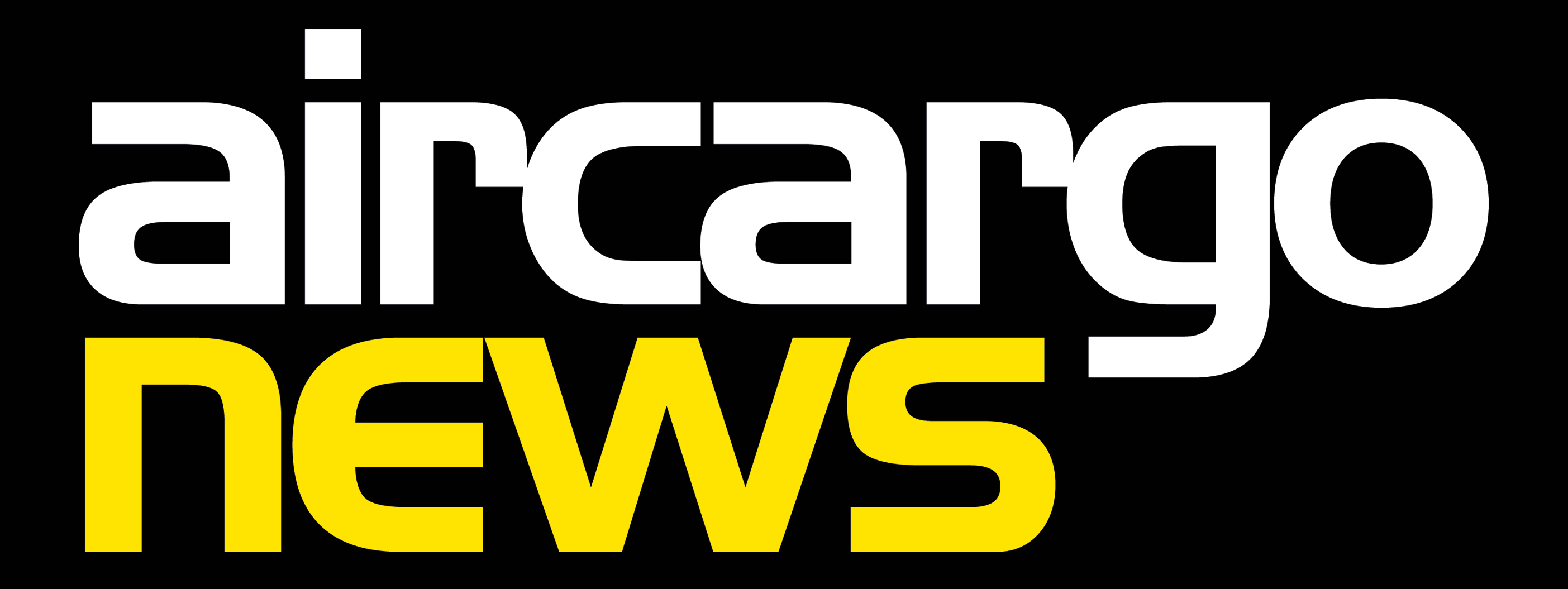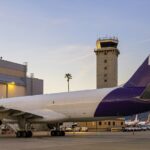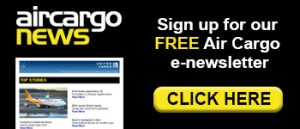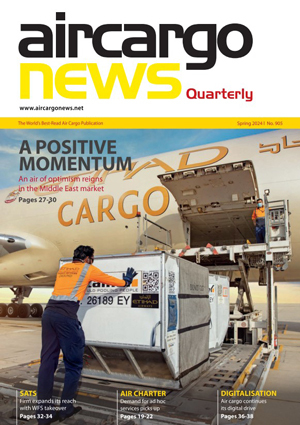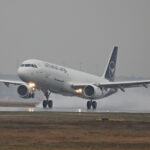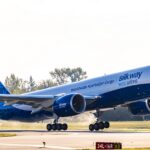Empire Airlines: Building on a niche
05 / 02 / 2019
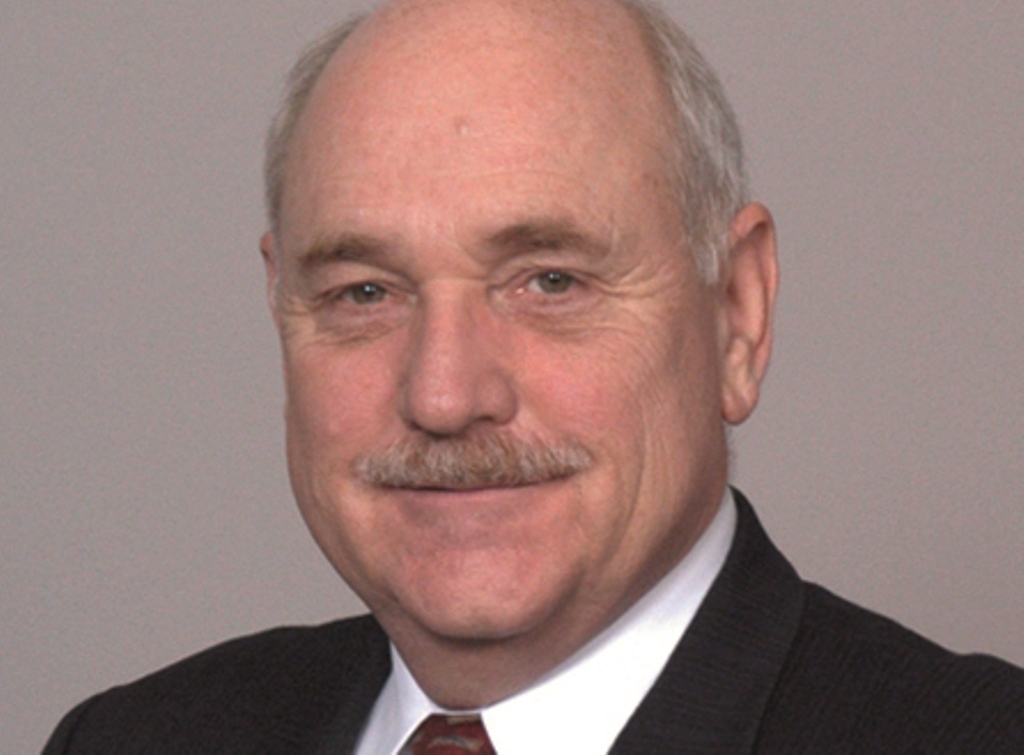
Not many executives are steering a large express carrier and working on unmanned aircraft development while work on a freighter conversion is going on near their office.
But then, Tim Komberec’s life in aviation spans a myriad of roles and environments.
The president of Empire Airlines, last year’s recipient of the Pacific Northwest Aerospace Alliance’s executive of the year award, entered the aviation industry after high school, when he was employed by Boeing as an experimental machinist.
He went on to log more than 13,000 flight hours as an airline pilot, check airman and flight instructor, and subsequently managed a broad spectrum of aspects of the industry, dealing with turboprop operations as well as jet aircraft fleets.
Komberec first joined Empire Airlines in 1993, spending two years as director of operations before embarking on a different challenge elsewhere.
Then in 2000 he returned to the Idaho-based airline to take over the controls.
The carrier he rejoined had started out as a regional operator, flying both passengers and cargo, but some time before Komberec arrived for his first stint, management had taken what turned out to be a momentous decision.
In 1987, the company started flying a single regional route for FedEx, which led to an agreement the following year to take over an operation involving eight Cessna Caravans that were flying for the integrator.
This alignment set Empire on a course to grow into the largest regional operator for FedEx. Today it flies 55 aircraft for the express company. The fleet comprises 37 Cessna Caravans and 18 ATR72/ATR42 freighters.
New aircraft will be introduced for the regional carrier starting next year.
Expanding fleet
In 2017 FedEx signed orders for 50 new Cessna SkyCourier 408s with an option on 50 more, and for 30 ATR-72-600Fs with 20 options.
Deliveries are scheduled to commence in 2020. Empire is set to work with both types, an arrangement Komberec is looking forward to.
The relationship with FedEx has become closer over the years, extending from flying, to maintenance work and other elements.
Back in the 1990s the involvement led to a rare foray across the Atlantic, when Empire management set up Express Air, a regional feeder carrier for the integrator in Europe.
Looking back on the start of the involvement with FedEx, Komberec thinks it was a good strategic decision, although back then it was simply “part of a strategy to do everything to keep bread on the table”.
Many of the operators that were in business when the FedEx relationship got under way, such as Zantop or American International Airways, have since disappeared from the scene, he points out.
“Today these opportunities are few and far between. For a regional cargo carrier in the US today, if you’re not aligned with FedEx or UPS, it’s much more difficult. There are some smaller opportunities, some stuff for the postal service, but it’s pretty limited,” he says.
“It was a matter of being in the right place at the right time. It’s been really good for us. We work with quality customers – not many, but they’re quality customers.”
The rapid growth of e-commerce has brought a sharp boost in demand for lift to carry parcels, which prompted Amazon to build up its own domestic network of 40 freighters in North America, but Komberec is not sure if this demand extends to the regional scene to create openings there.
“We heard rumours that Amazon was looking to establish regional feed, but I’ve not seen anything.
Their focus is on widebodies,” he says, adding that he does not see a huge opportunity in that arena.
Nor, for that matter, is he pursuing any potential openings for Empire.
“We’re focusing on what we have today. We want to take care of our customers,” he says.
The main reason for this stance is also the biggest stumbling block for anybody with aspirations to build up or expand a large regional flight operation in the US – the lack of pilots.
It is an issue that has been frustrating regional carriers for years.
There is no shortage of demand, but there are simply not enough pilots to man additional aircraft, Komberec says.
What has sharply exacerbated the problem in the US is the mandate that commercial airline pilots must have a minimum of 1,500 hours of flying under their belt.
The threshold was raised drastically from 250 logged hours in 2013 in response to the crash of a Colgan Air regional flight four years earlier in which 50 people died.
Regional carriers have borne the brunt of the impact of this rule change, according to the Regional Air Cargo Carriers Association (RACCA).
Historically, flight school graduates emerged from their training with the necessary amount of hours to sign up with regional carriers as the first step in their careers, but the new regime left the regional sector of the industry struggling to recruit pilots.
For Empire, the long-standing relationship with FedEx has brought relief on that front.
Last year the integrator unveiled its Purple Runway scheme, a career path for young pilots under which they are hired by FedEx and seconded for a two-year spell to regional feeder operators before manning the integrator’s cockpits.
The concept was developed in consultation with the integrator’s feeder carriers over a number of meetings, recalls Komberec. Interest has been lively so far, he reports. “I think this could provide 20% or better of the pilots in our company,” he says.
More importantly, it probably marks the beginning of a fundamental change in pilot recruitment in the US, he thinks.
UPS has embarked on a similar scheme, and some airlines have also started fresh pilot training concepts, he points out.
“I think we’re starting to build a new model for pilot training in this country. Airlines are becoming more involved,” he says, adding that recent enrolment numbers at flight schools indicate increased interest in becoming a pilot.
RACCA has played an active role in this drive. It has beaten the drum tirelessly about the pilot shortage and leaned on lawmakers to open more avenues for young pilots to build up flying hours and experience.
As the organisation’s chairman, Komberec has been involved in this drive, and he expects no let-up this year.
“A big part of our work in 2019 is going to be to continue finding ways to have more pathways for pilots to come into our seats. We’re looking for new ways for pilot development through regulatory change or exemptions,” he says.
While the pilot shortage has attracted much attention, leading to efforts to alleviate the problem, the industry is also having a hard time meeting its need for mechanics.
The numbers of entrants into this profession is seriously down and way short of required levels, confirms Komberec.
This is a concern, but it is not as alarming as the pilot situation, he says.
“I think the mechanics piece is easier to solve. There’s less of a barrier,” he says, adding that several airlines and repair stations have moved to build recruitment programmes internally or in collaboration with aviation maintenance professional schools.
For Empire, the issue is close to the skin, as the company has a maintenance and repair arm that it has expanded over the years. In addition to maintenance and repair (a good chunk of it for FedEx), Empire Aerospace also does modifications.
Opening doors
One project in the works is the installation of a large cargo door in an ATR 72 for Hawaiian Airlines, the third freighter for the carrier.
Once it is ready for service, Empire will also operate the cargo plane, thanks to its engagement with Hawaiian on the passenger side.
Empire had turned its back on passenger operations to concentrate on freighter activities, but as one of only two ATR operators in the US at the time, it was approached by Hawaiian when the airline was looking to establish an inter-island passenger service with three ATR 42s.
The launch of this operation in 2014 led to discussions with Hawaiian’s cargo division about an intra-state freighter service, which took off last year.
As with the passenger contract, Empire performs the flying for the airline.
Komberec reckons there is scope for one or two more freighters for Hawaiian’s operation.
While he has no ambition to take on new clients at this stage, he is working on expansion in another direction.
Four years ago, Empire Unmanned was launched, a provider of unmanned aerial systems to perform inspections, mapping, studies, videography and surveillance.
As far as the Empire management team is concerned, this is just the start.
Role for drones
They envisage a role for drones in carrying cargo and regard the regional arena as the logical initial proving ground.
“I think on the airline side the regional cargo airline sector is the one where you are going to see this start,” says Komberec.
RACCA president Stan Bernstein agrees. The first commercial flight of an unmanned aircraft in North America will not be between Chicago and Los Angeles, but on a regional route over sparsely populated terrain, and it will carry cargo, he predicts.
“We’re making incremental progress. Every day I see somebody gets approved for operations beyond line of sight, but these are all for small shipments. Nobody is carrying boxes,” Komberec says.
He cautions against excessive optimism. At this point the technology and the people on the ground required are far more expensive than flying a manned aircraft, he notes.
The biggest issue, though, is the regulatory side, both for the aircraft and for the operation.
“We need to get these two sets of regulations developed,” he says, adding that the requirements will likely be “at least similar to 135 type certification”.
Empire Unmanned co-founder Steve Edgar, who is on the Unmanned Aircraft Systems Aviation Rulemaking Advisory Committee, reported last year that there is broad agreement in the committee that drones can operate under existing aviation safety rules for manned aircraft.
He expects drones to enter commercial service hauling caravan-sized loads to remote locations before being deployed on intercontinental routes.
For Empire the second stage would mark a departure from its traditional habitat.
On the other hand, it would not be surprising if it ventured out in tandem with a client.
